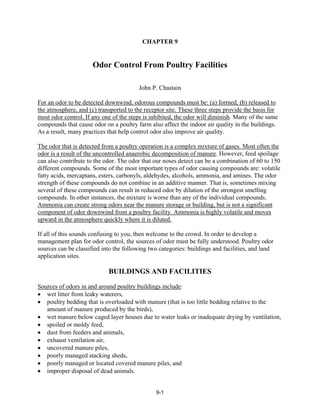This document discusses odor control from poultry facilities. It explains that for an odor to be detected, odor compounds must be formed, released, and transported. It then discusses sources of odor from poultry buildings and facilities as well as land application sites. Specific management practices are outlined to control odor at each source. The document also covers ventilation systems, dust control, and planning facilities to minimize odor impact through consideration of separation distances, wind patterns, topography, and natural barriers.








